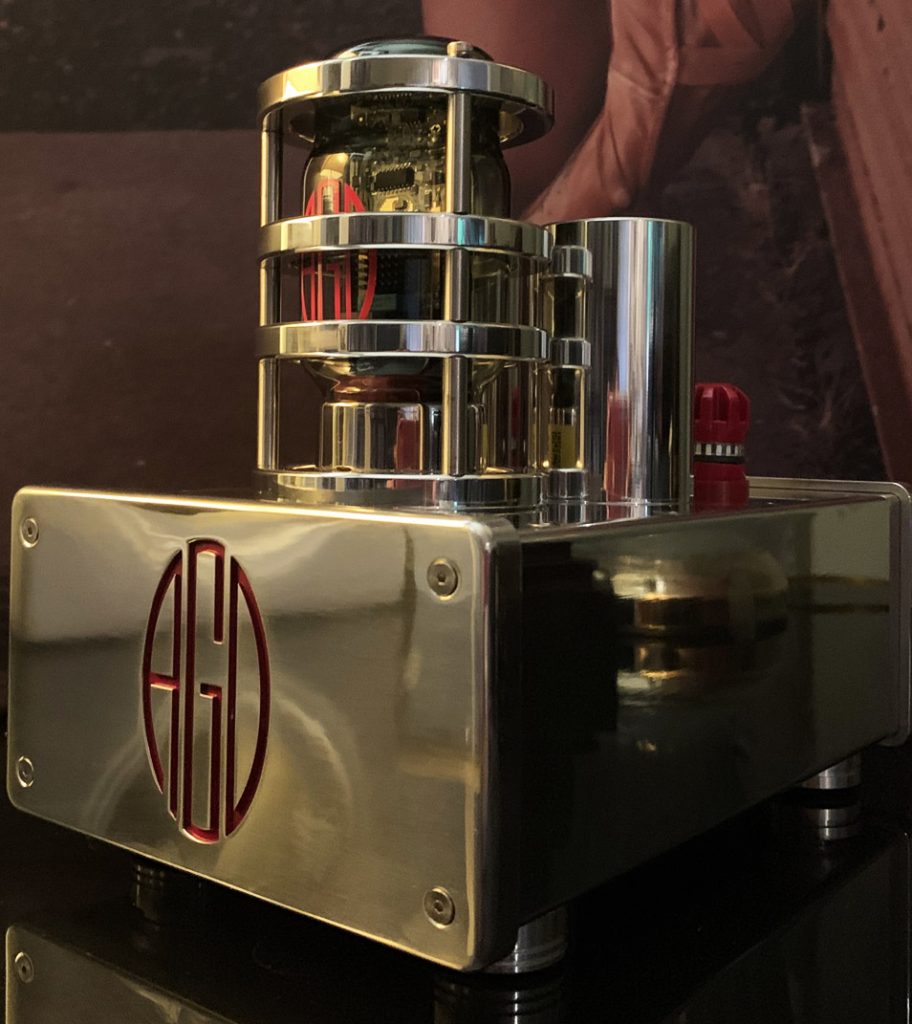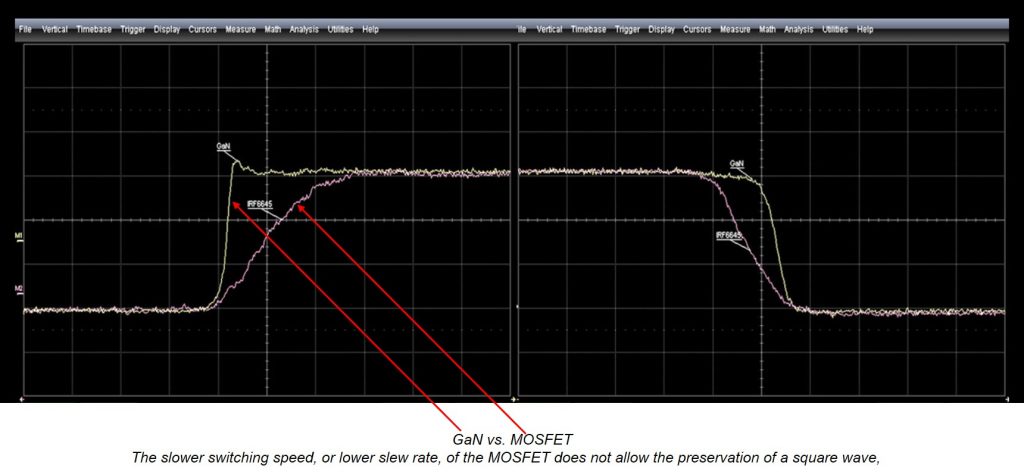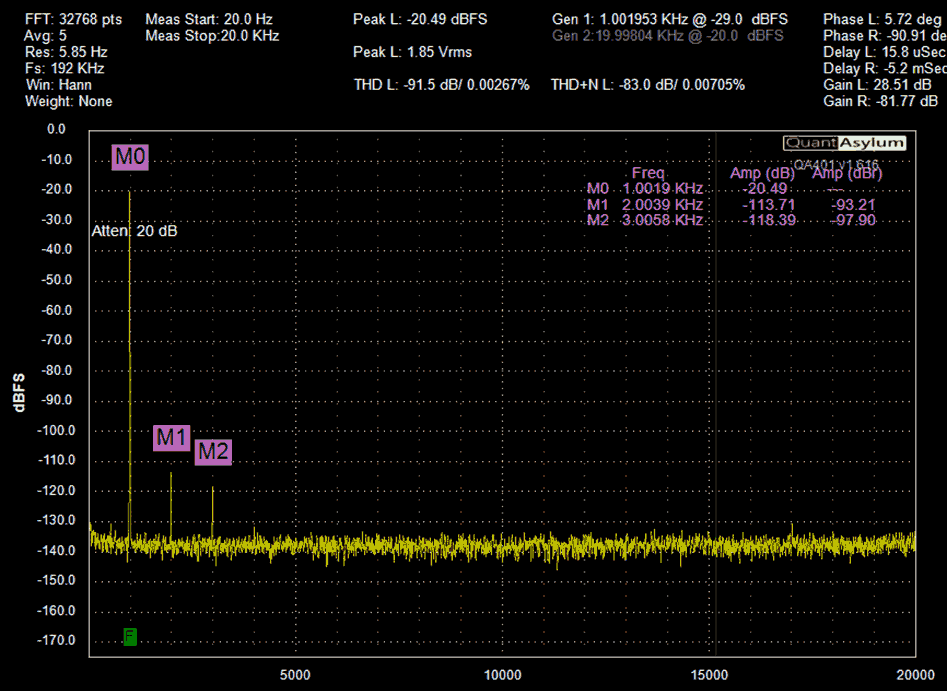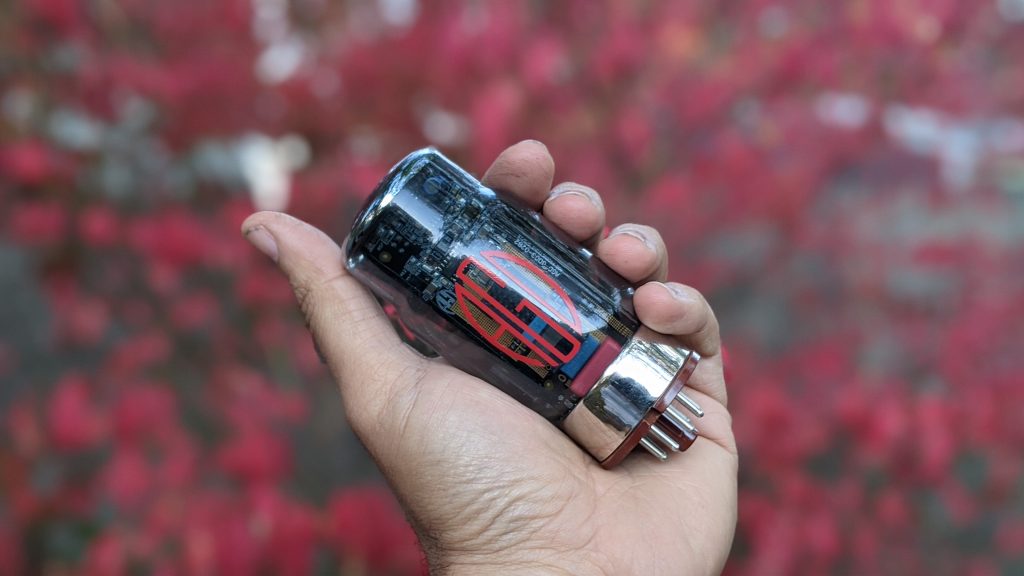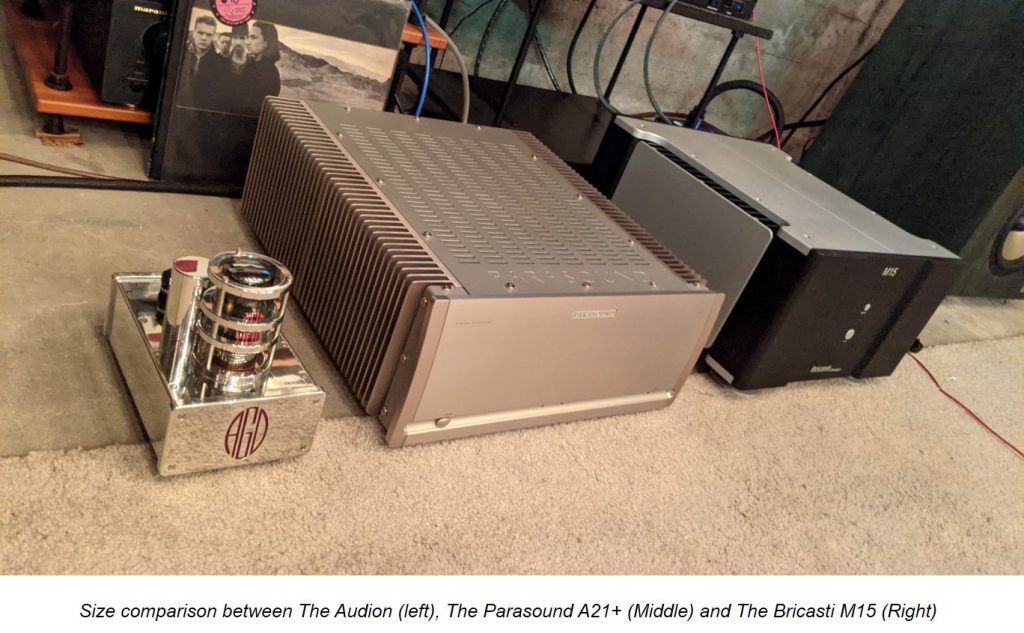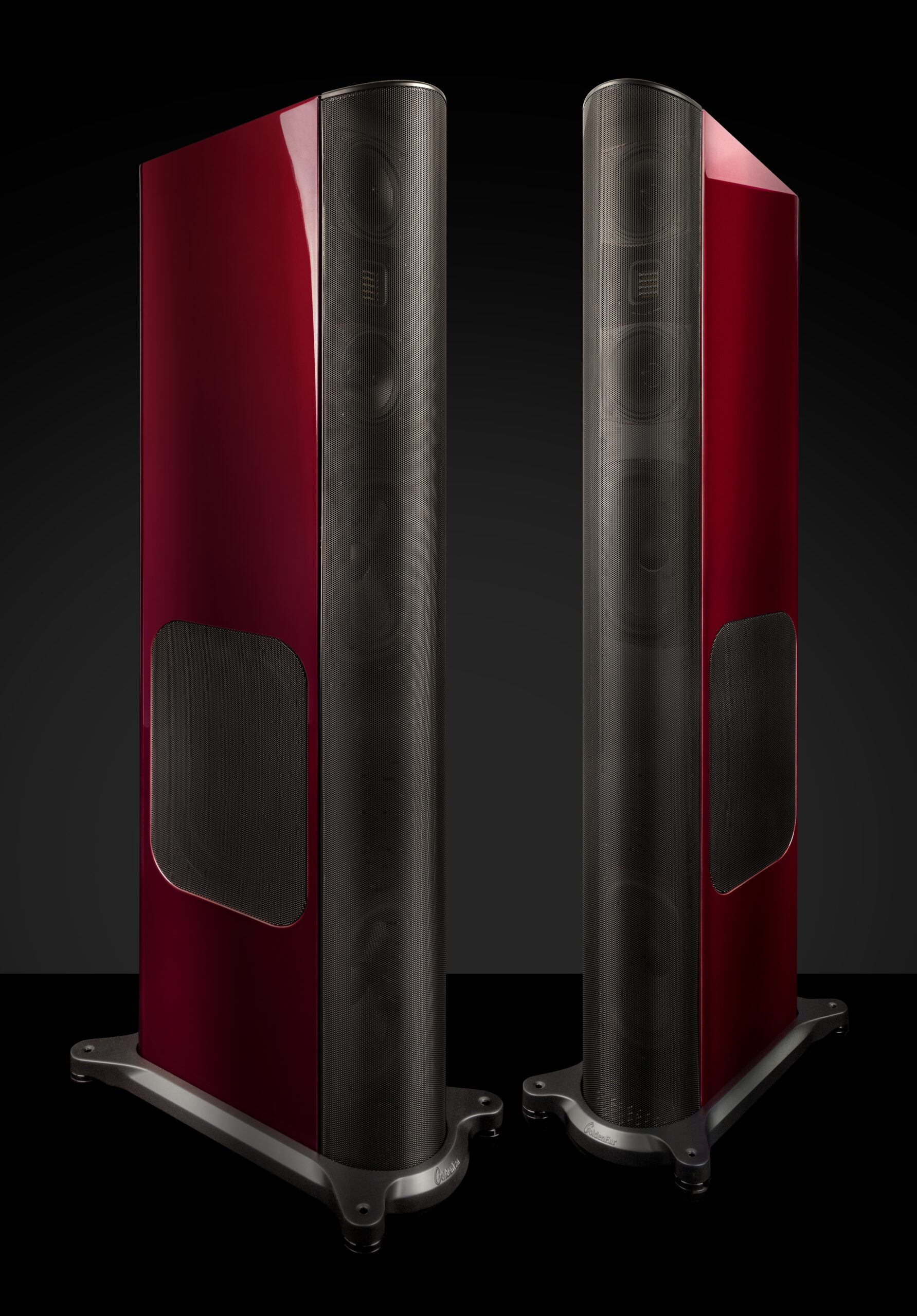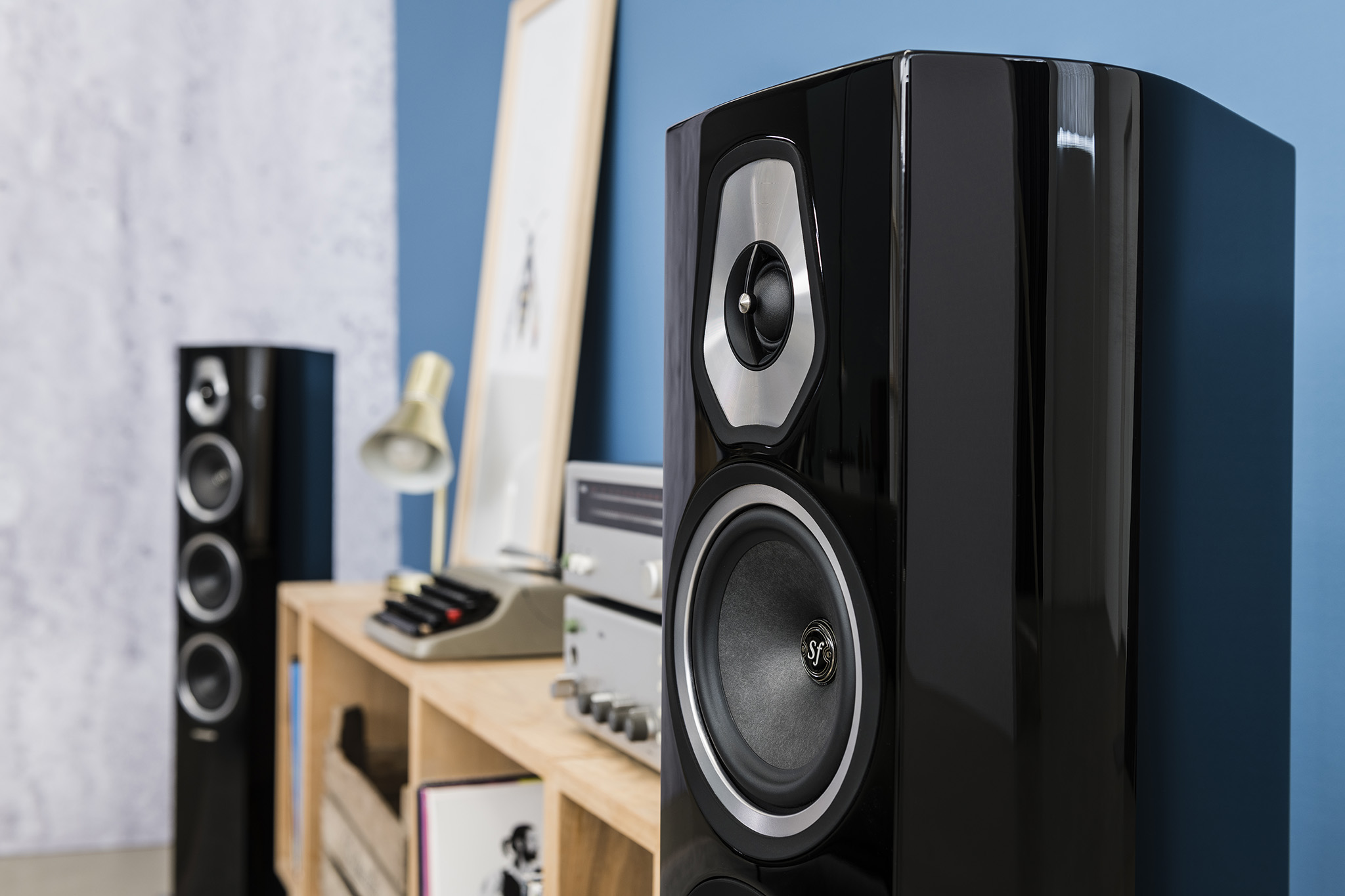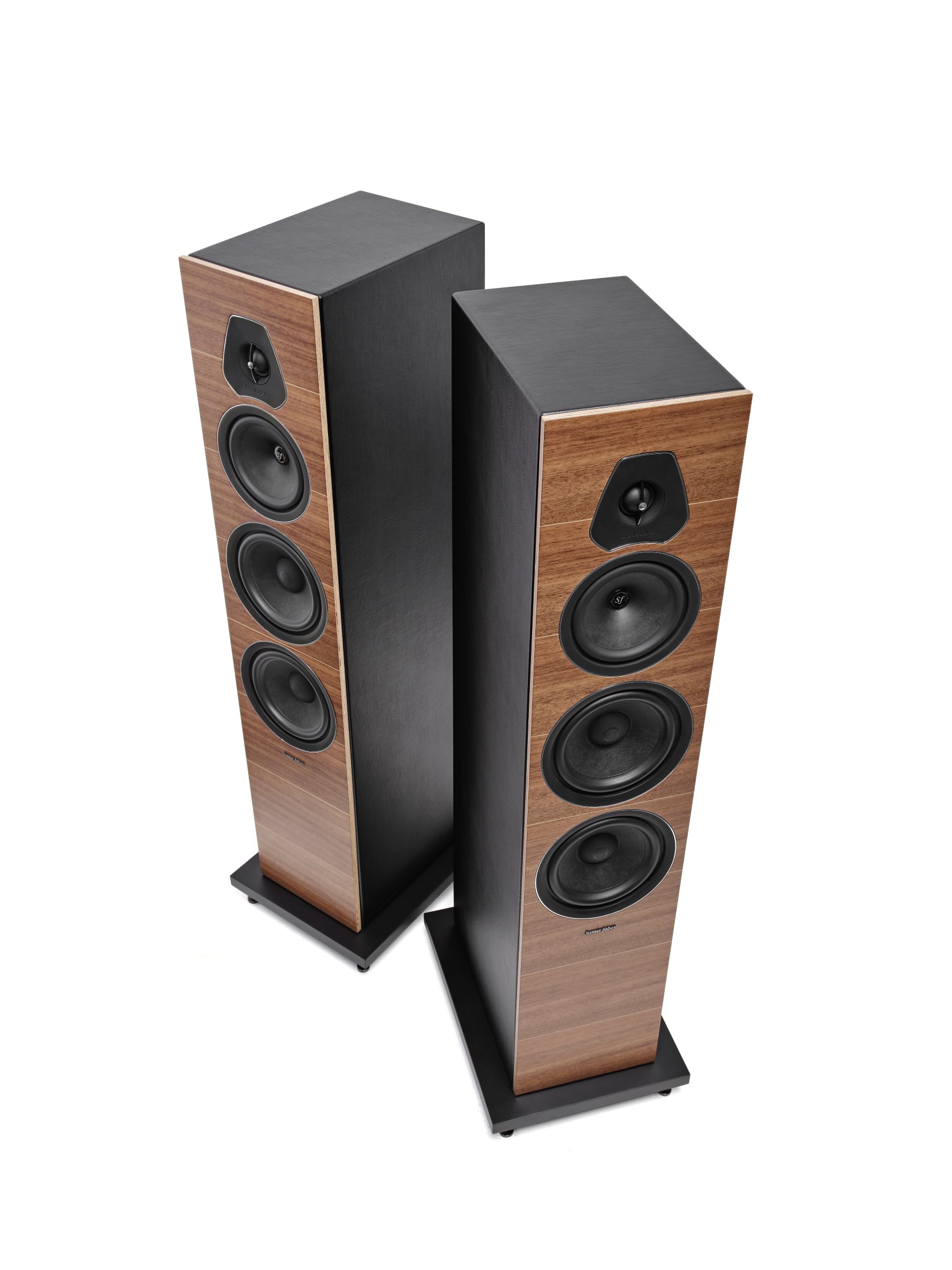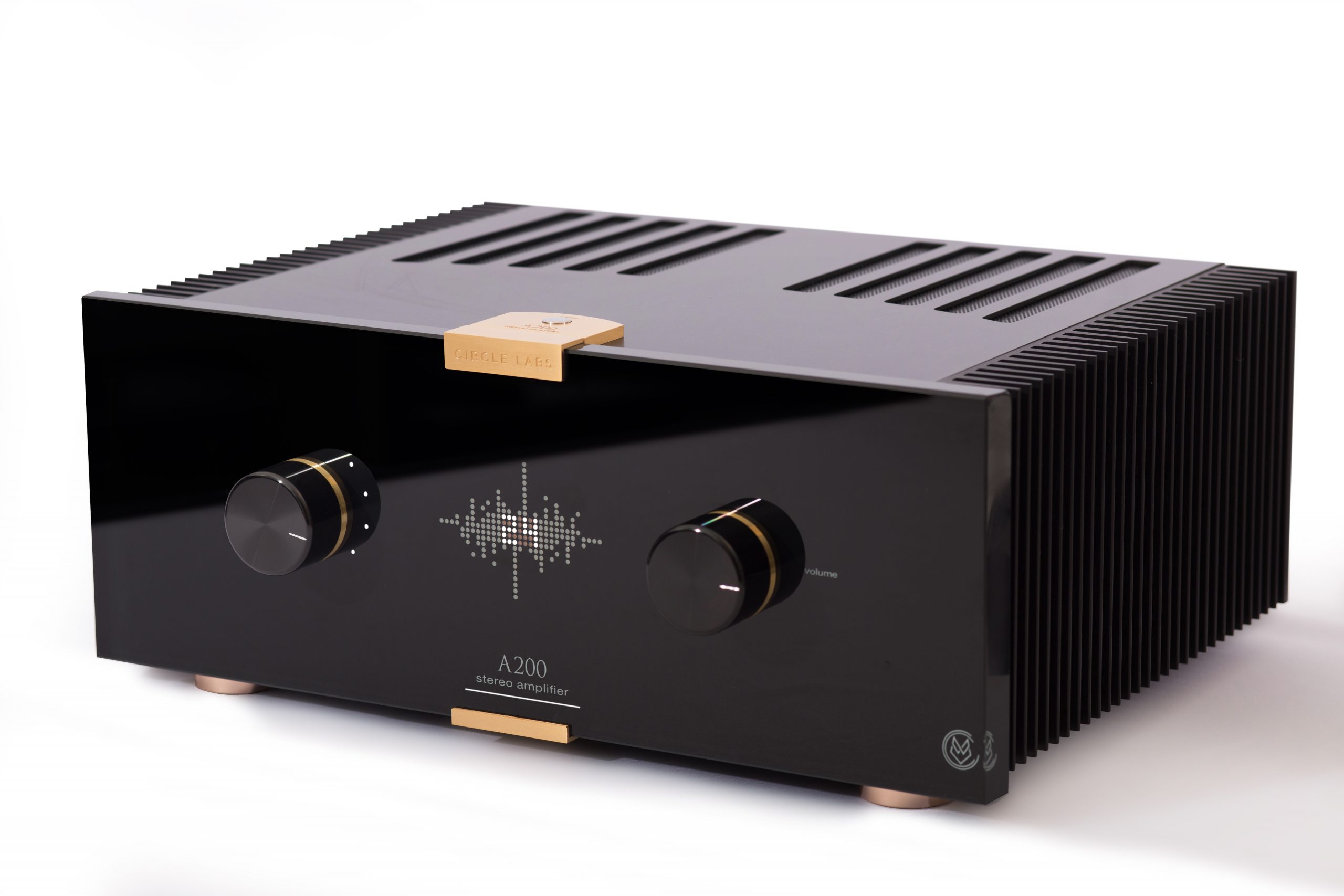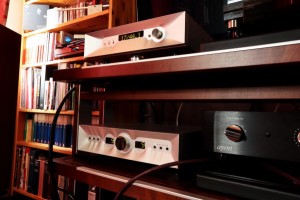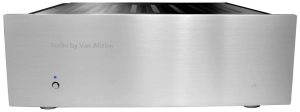What's new in audio? Not much in the past 40 years or so. When was the last technological shake-up in audio? Compact Disc, maybe? From there, digital technology has spawned endless formats of claimed resolving power that is rarely capitalized on. What I have had a hankering for is not another format war, rather, HARD technology. Like the birth of the solid-state transistor that knocked vacuum tube amplifiers on their heels.
To my surprise, such a technology flashed into existence a couple of years ago, that is truly revolutionary, and I have been oblivious of its existence until now. AGD Productions leverages this technology in The Audion amplifier. For the first time in my roaming of the "audioscape," I can say I found a product that is truly a "giant killer." Honestly, I despise "audiophoolery" when it comes to cliché descriptors, however The Audion has forced my hand. C'est la vie.
Behind Every Great Company…
Diving into the technology that drives The Audion (full sales sheet available HERE) will have to wait, because as with any great movement in an industry, there is an amazing backstory that should be told. It is most interesting when you find a pioneer in any technology.
Alberto Guerra, the founder of AGD Productions, spent many years at International Rectifier (now Infineon), specializing in semiconductor development. During this time, he accrued several patents while developing Gallium nitride (GaN) semiconductor technology. GaN semiconductor technology, that make up the transistors used in The Audion, are the reason The Audion is exceptional.
There are many talented engineers in audio who develop great products to honor music. However, these engineers are bonded by existing hardware technologies. This means they can only use electrical components that semiconductor manufacturers determine there are a market for. However, Alberto Guerra was on the leading edge of development for the GaN transistor, and this allows him an insight in to the engineering of an audio product that very few others are fortunate enough to have.
I am going to embellish a little bit here, and create a narrative out of my hour-long Zoom call with him. I had to contain my jealousy as Alberto popped into the frame 3,000 miles away in sunny California. Outside of my small New England home, snow was aggressively falling in weighty chunks, covering the discarded leaves strewn about my lawn. Sheesh, what a difference from California! In the background of the call was Alberto's lovely home. In sight was a Magnepan 1.7, a beautiful picture of a ballerina, and a pair of powerful celestial binoculars.
Alberto is obviously a man of humility and deep passions. Shame on me for not finding out his direct experiences with live, unamplified musical performance, but conversation was fluid. Regardless, we did discuss how important it is to understand the sound of instruments, their interactions with each other, and the space they are in when developing a product that reproduces a musician's performance.
The Magnepans that were in-frame are legendary for their midrange, and their difficult load to an amplifier. Single-ended Triode (SET) tube amplifiers are legendary for their accurate preservation of the midrange, but lack power to get Magnepans rocking. Pure class A, solid-state amplifiers are close in sound to a SET amplifier, but are hideously inefficient (<30%), large, hot, and only have moderate power output capabilities.
Alberto broke out of these heavy trade-off analog products by leveraging his entire tool-kit, from engineering to music, to go digital. The technology behind The Audion was much of our discussion, and while my explanation is somewhat oversimplified, here is why GaN technology is so important in The Audion.
The Maturation of a Technology
I hate to use the term "Class D1" here because I do not want to trigger the deep fears of music lovers everywhere. Historically, however, Class D amplification has been relegated to the budget realms due to technical limitations. Class D's limitations have consistently caused them to sound like early 1980's digital music, through the same era's metal tweeters. This is unappealing to most. Mind you, not all Class D amps perform like this, however to soften the musical blow of Class D sound, manufacturers often have to trade-off resolution.
When The Audions arrived at my door, packaged in their pelican case and dripping with elegance, I was immediately skeptical of what their performance would be. For better or worse, they are Class D amplifiers. My pragmatic and simple-self has come to learn that many fancy-looking products rarely perform, and represent more of a lifestyle, rather than a love for music. I used the Parasound A21+ (HERE) as an amp stand (like the classy guy I am) for the pair of extremely small mono-blocks. I then threw The Audion pair right into the gauntlet, driving my large 4-way loudspeakers to start the arduous task of finding their strengths and weaknesses.
Within seconds my jaw was agape. I began firing off text messages to my close, music-loving friends with the ":o" emoticon. The Audion is the only Class D amplifier I have heard to date that I would put in the upper-echelon of all audio amplifiers I have ever experienced. This includes any offering by companies like Krell, then later D'Agostino Designs, Audio Research, Gryphon, and even Bricasti Design. The Audion needs to be a wake-up call to all manufacturers, and should scare them. All thanks to the use of a technology developed for high-power, microwave and radio frequency use: The Gallium nitride (GaN) transistor.
It's about time we answer the question, "what's so special about a GaN Transistor?" Most transistors are built from silicon. Thanks to silicon, we have bounded into the technological age we have today. What happens when you hit the limits of silicon-based transistors? You get the audible effects that have caused class D amplifiers to carry a negative stigma.
The fastest silicon transistors cannot produce a very good square wave at high frequencies. Higher frequencies cause the junctions in the structure of the transistor to look more like a capacitor, storing energy, and releasing it later. Ultimately, this makes a silicon transistor sluggish to respond to rapid voltage changes along with other detrimental issues. Sluggish is a relative term since silicon still can offer slew rates (the speed in which the voltage can change with time) of 100 volts per nanosecond. In a traditional linear amplifier (Class A, A/B, etc.), this is plenty of speed. It is not quick enough, however, to create the perfect square waves required for the pulses of a Class D amplifier.
GaN transistors offer up to 100 times the switching speed in comparison to the silicon MOSFET transistors that are normally used in amplifiers of all types. The difference can be seen in this comparison below as provided by the AGD Productions' website. This speed advantage is critical to the performance of The Audion amplifier. The utilization of GaN technology (along with competent engineering), means the digital square waves are near-perfect. A perfect square wave contains all of the sound, and harmonics of that sound. When the square wave is filtered back to a sine wave by a very simple analog filter at the amplifier's output, the musical sinewave is intact and preserved, with no added distortion.
Speed is not the only advantage to GaN transistors, nor is it the only reason The Audion sounds so amazing. GaN transistors have inherently lower noise thanks to fewer passive effects from things like capacitance, resistance, and inductance. These effects, that are due to the structure and elemental nature of such devices, are called parasitic effects. Parasitic effects, rather the elimination of them, are important to the final design of The Audion. I am getting ahead of myself, however.
The final advantage of GaN transistors is their ability to produce higher power output in a smaller package. This characteristic, known as power density, helps the overall footprint of the amplifier be more compact since less heat is produced by the output devices. It is also a contributing factor to the stellar 94% efficiency rating of The Audion amplifier. Interestingly, there is no "warm-up" with The Audion. Power up, and go!
The rest of The Audion is as leading-edge as the GaN technology itself. The Audion utilizes a switching power supply, instead of a linear power supply, that further contributes to its diminutive stature. Since the power supply of an amplifier must be as good or better than the amplifier section, there were no punches pulled in its design, too. This power supply utilizes a massive amount of filter capacitance to deal with the unique challenges a class D amplifier section can bring. 20,000uF to be exact, which may not seem like much when compared to a linear supply but remember: We are talking about a power supply that is as efficient as the GaN amplifier, which typically renders large amounts of DC filter storage capacitance unnecessary.
Remember the parasitic effects as discussed above? They do not just occur within electrical components themselves, but throughout an entire circuit layout. This is another critical design aspect when developing a high-speed circuit. Parasitic considerations even effect the selection of circuit board material. At high enough frequencies, the circuit board material can act as a dielectric, like the goop found inside of an electrolytic capacitor. This will cause the layers of the circuit board to store small amounts of energy raising the noise floor, or causes distortion in the signal. AGD Productions paid careful attention to the circuit layout in The Audion to maximize its performance.
Not unlike trying to assemble kitchen cabinets from Ikea, the whole complexity of circuit design for high-speed electronics can be defined as: Intimidating. There are those out there trying to solve these new and unique challenges as things become smaller, lighter, faster, lower noise, higher power, and more accurate. Alberto Guerra seems to be at the front of the pack, and has clearly executed the design of The Audion (which is a smaller brother to his current flagship amplifier, The Vivace) well.
What AGD Productions' understanding of advanced digital circuit and component design all add up to is stellar, measurable performance. When reaching for the stars, most are happy to hit the moon, however The Audion has landed among the most beautiful cosmic features out there. Despite The Audion's price tag $7500/pr in chrome and $6800 in a matte finish (prices are currently valid in the US only, direct from AGD Productions), it touts the same THD+N as my Bricasti Design M15 (HERE)at 0.005%. The Audion will give you a strong 85 watts into an 8 Ohm loudspeaker, which doubles to 170 watts into a 4 Ohm loudspeaker, showing its ability to deliver serious current. Over 30 amps of current if necessary. These numbers back up The Audion's claim that it can drive extremely complex impedance loads. Finally, to those who say that digital amplifiers are "noisy," The Audion has a noise floor better than -130dB. Numbers do not lie, and it shows in the sound.
The Glass Envelope
I had the same knee-jerk reaction as any reasonable audio enthusiast: What a blatant marketing ploy to throw the amplifier section inside a glass tube! However, the more I reflected on this, and the more I found out about the purpose of the glass envelope holding the amplifier section of The Audion, the more sense it made. Even if AGD Productions admits there is a marketing aspect to it.
AGD Productions understands we tend to listen with our eyes first. A beautiful piece of equipment, in a well decorated listening space, contributes to our relaxation. The complete experience helps us enjoy our listening journey. This makes sense. Despite that my listening space is more akin to a dungeon than a city loft, when it is tidy, my music always sounds better. The same way my car drives better after a good washing.
The glass envelope also makes The Audion look like a SET amplifier, which is the very performance AGD was looking to capture, but with drive. The KT88 sized glass envelope pays homage to the original Audion triode vacuum tube, dating back to 1906, which was also a technological leap in its time.
It is a point of pride for AGD Productions that The Audion can perform as well as it does. Like tube rolling, the entire amplifier module is replaceable. This feature will become critical, in the fullness of time, for AGD Productions product owners.
Currently, the entire amplifier sections between The Audion, and the Vivace are interchangeable. Rumor has it, too, that the Grande Vivace will soon be available. As AGD continues to perfect their product line, your pair of The Audion will not become $7500 paperweights.
I deeply admire this consumer consciousness. There are other manufacturers beginning to offer upgrade paths and replaceable modules, however that number is still too low. In design, form needs to be simultaneous to function. The glass envelope used to house the amplifier in The Audion is a fantastic example of this mindset. My conclusion is the use of the Glass Envelope to house the amplifier section of The Audion was a unique, and thoughtful move on many levels.
Experiencing The Audion
My Large, four-way towers with dual ten-inch woofers are a demanding loudspeaker. With an impedance minimum of 2.8 Ohms, and an average of 3.8 Ohms across the whole audible spectrum, they are a true 4 Ohm loudspeaker. A low impedance was a design trade-off I was willing to make to get the transient performance, and efficiency I was looking for. Besides, I knew these would be used with a large amplifier of some sort that could easily handle loading like this.
What I did not realize when bringing this three-year design to life is how much of a litmus test they would be for all sorts of amplifiers. You see: A 2.8 Ohm load that is nearly resistive is not very low for a four-Ohm nominal loudspeaker, but it is a challenge. I find many amplifiers, regardless of touting huge numbers at 4 Ohm power ratings, simply cannot control the bass/midbass in a manner that is anywhere near the Bricasti M15 fully differential amplifier.
Then along comes The Audion, and it showed that grabbing hold of my loudspeakers, and controlling them with the precision of the Blue Angels is not something exclusive to the M15. While I would love to attribute the rock-solid control to the excellent power cords that arrived with The Audion, I do not believe this is the case. The Audion's ability to control my loudspeakers all the way to their in-room lower limit of 18Hz is breath-taking.
There is a caveat to this control. It is not to the magnitude of the M15, nor does The Audion have the same level of impact. I would not expect this, however, since the M15 is more than double The Audion's price. I need to remind myself, too, that The Audion is the "little brother," and not the flagship.
Yet, the sound of The Audion goes far beyond loudspeaker control. My perception of limitless frequency extension from bottom to top is on-par with the best I have heard. The timbre is very sweet, but not lacking any resolution. The soundstage is pushed to a width and depth that extends beyond the boundaries of the room. Speed is another forte of the Audion. Dynamics explode, seemingly out of nowhere, yet subtitles are preserved regardless of complexity.
Do you smell that funk? Its low-down, dirty, I even tried to wash it off, but this funk got to me by way of Victor Wooten. When this jazz/funk bass master is not bringing up the low-down for Bela Fleck, he is creating and collaborating on his own. Victor may be, in my opinion, the greatest four-string bassist of all time. His 2005 release, Soul Circus, is a whole lot of fun. The recording is great, and there is a lot of staccato finger work, backed by perfectly timed drumming that begs to be fleshed out sonically. Is it any surprise that The Audion performed Victor's funk with ease?
John Patitucci is another Jazz bass standout, who has mastered both upright and electric bass. In 1991 he released Heart Of The Bass. This album was a collaboration with the legendary Chick Corea, who's masterful musical interpretation can be heard in John's performance of the famous "Prelude in G Major" from J.S. Bach's "Cello Suite." I am not one for remakes. Especially when a talented artist of any given instrument embellishes a beautiful piece of music with an abundance of busy work.
However, this was not the case in John Patitucci's performance. His performance is moving, and John knows how to linger on notes just long enough to bring deep meaning to them. The small audible details in his finger work brought out by The Audion provided a tangible reality to the performance. I am not talking about the loud, or over-emphasized clicks and string-drags that are so purposefully built into many solo bass performances. What I heard was a soul, behind an instrument, driving a lifetime of learning through extremely quick and subtle finger movements to bring a song to life. The Audion could not have resolved such a picture if it was not doing just about everything right, on all levels.
As a rule of thumb, I like to muse about music that is widely available. Humble-bragging about "unobtanium" albums does little good to anyone, however The Audion has captured something very special in one of my all-time favorite, acoustic Jazz recordings.
Blue Skies – Jazz Ballads from the 1930s to Today, by the Harry Allen Quartet, is a simple two microphone recording. The performance is in a church with lovely, natural reverb. From the standpoint of capturing unamplified music in a large space, this recording is perfect. As a quick aside: I have seen copies of Blue Skies pop up on Discogs, and even Amazon. If you are disappointed in it for $15, I give you permission to lash me in the comments below. Deal?
Anyway, any music lover, even audio enthusiasts, should seek out acoustic instruments performing unamplified music. From a local high-school marching band, to a quiet piano club, wherever you look there is unamplified music. Perhaps after this pandemic blows over, but get it on your bucket list no less. I am talking about the kind of music that stands on its own merit here. Spoken to you by musicians, not recording artists. It puts a lot of what we hear in an audio system into perspective.
When Harry Allen is playing, The Audion captures the bell of his saxophone beautifully. It provides the feeling of being eight, or ten rows back from his playing. The hall then explodes with residual sound that completely envelopes the listener. The drums, piano, and bass are all in the back of the soundstage. "In the back" is where these large instruments live because most times, on a small stage, there is nowhere else to put these musicians.
The Audion captures the realism of the piano with incredible speed and precision. Again, I am speaking of real piano, perhaps 30 feet away, and not with a microphone shoved somewhere between the treble and bass bridges. Just as impressive is the limitless extension of the cymbals, and snap of a well-taught snare drum. The bass is subtle, and quiet, filling in a balanced bottom end as upright basses do when they act as the foundation for other acoustic instruments.
The Audion never forgets the hall, either. The envelopment of the complete quartet is blanketing, yet out of the way as it should be, letting the precision of the musician's playing come through. It is not every day a stellar recording meets a stellar performance, and The Audion was not about to let this one slip by.
What else is there? Complex classical passages? Solo Piano? Female Voice?
While I am tempted to put in a third album here, I would like to offer the pictorial below as a smattering of musical genres, and complexities, where The Audion simply did not fail at any level. That is, in consideration of its $7500 price tag as reviewed, and moderate power output. There is no such thing as a perfect piece of equipment, however, I believe The Audion's overall sonic quality is on par with the best amplification I have ever experienced, regardless of price.
Conclusion
The Audion by AGD Productions is a shocking new sonic revelation, using new GaN technology that brings Class D amplifiers into the upper echelon of performance. The Audion offers a diminutive stature, classic styling, and a whole lot of quality power packed into a small space. What more can anyone seeking a non-intrusive, but reference-level of performance ask for? Do not overlook The Audion as the future…Is now!
The Audion Monoblock Amplifier
Retail: $7500/pr. In chrome, $6800/pr. in matte (Mfg. direct, US only)
AGD Productions
Los Angeles, CA
- The "D" in Class D amplifier does not mean "digital." The switching-type amplifier, was given the moniker Class D, likely because A-C was taken. Class D was by British Scientist Alec Reeves in the 1950's. Class D audio amplifier kits can be traced all the way back to the 1960's. Historically, switching speed, and timing inaccuracies have been the largest limiting factor for Class D amplifiers.




